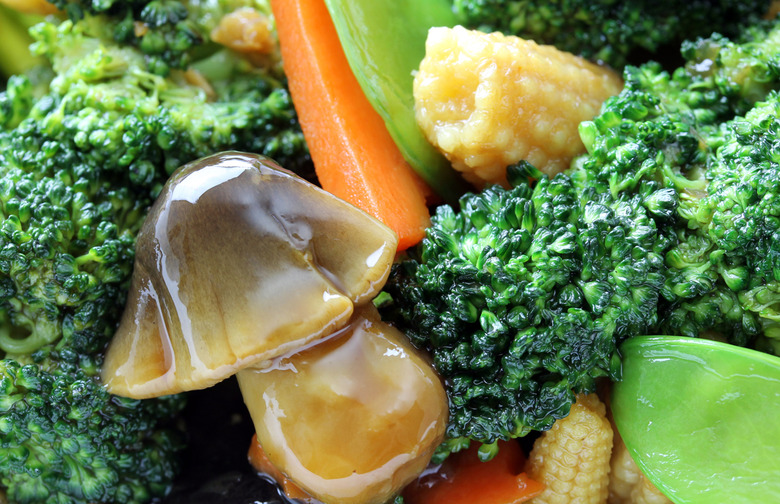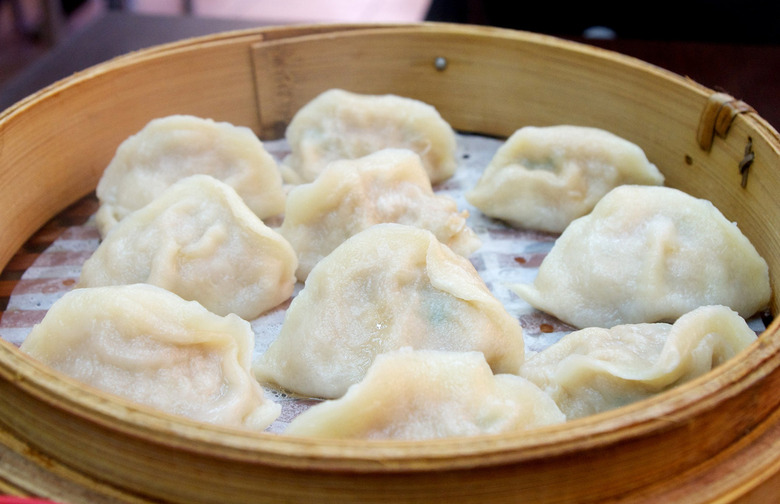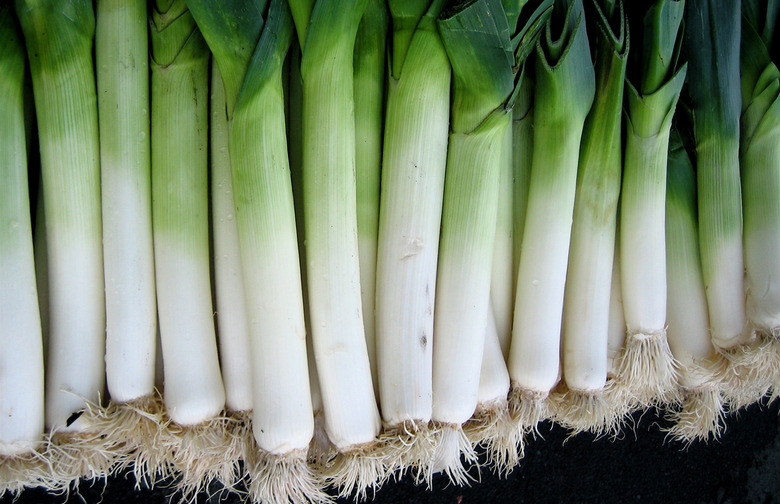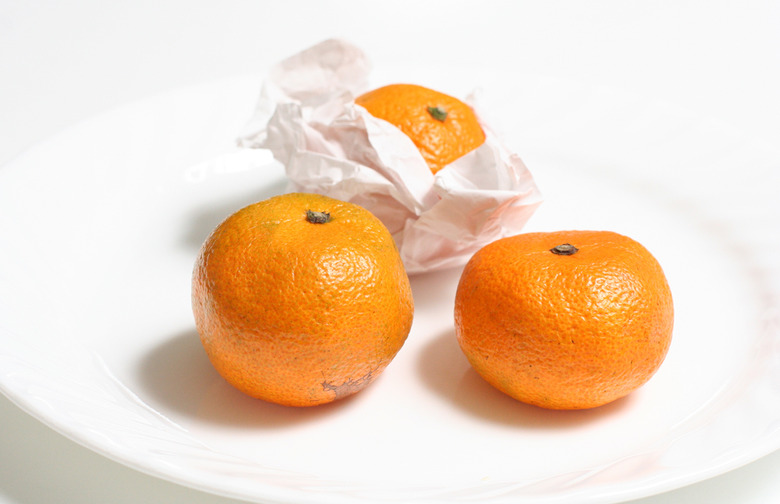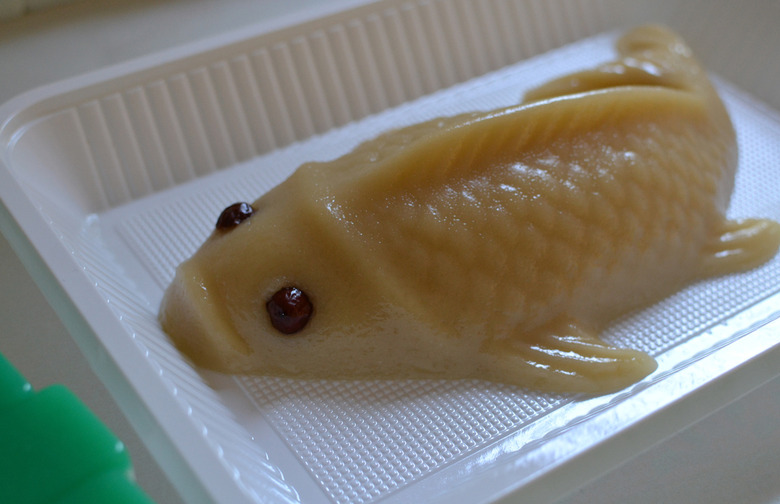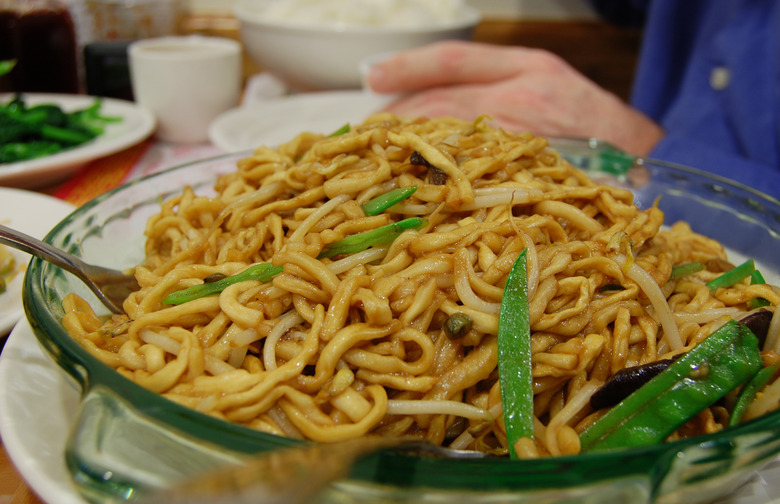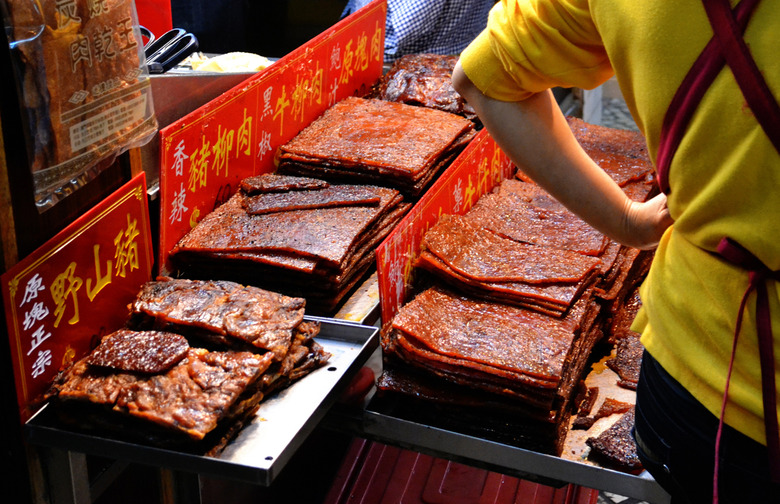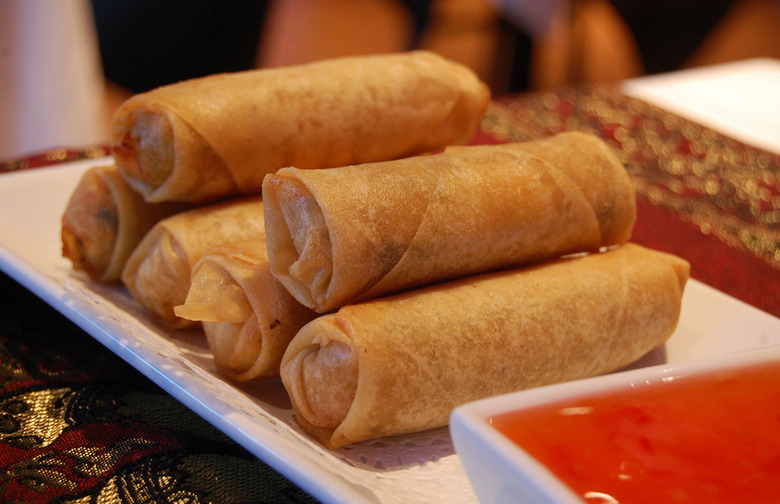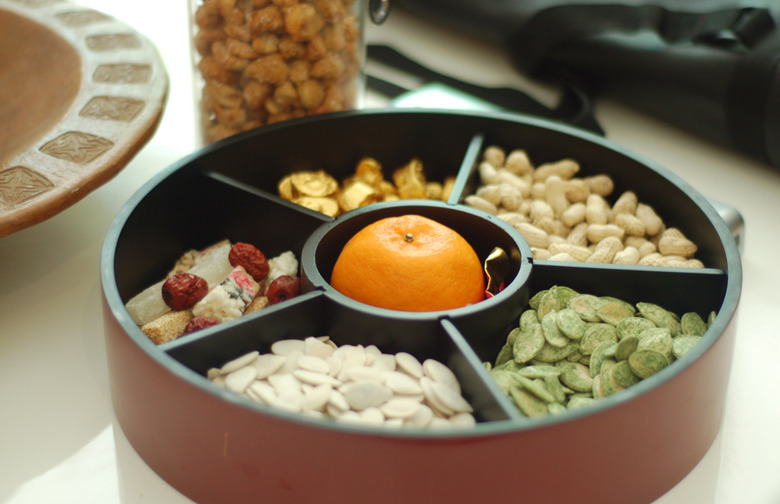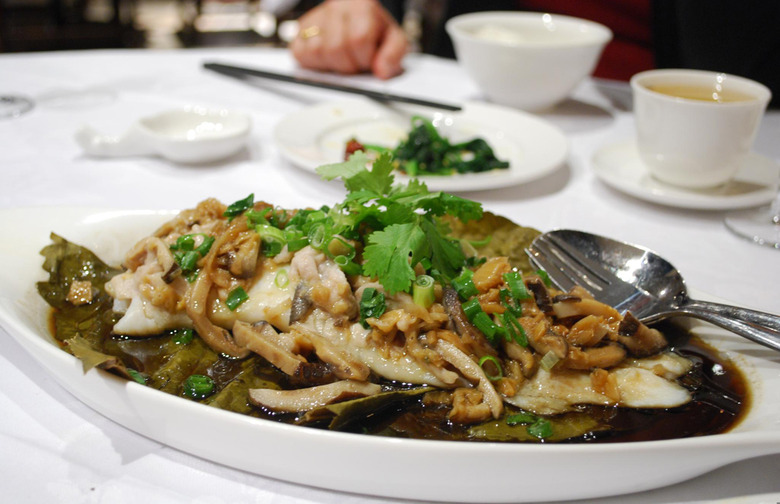Classic Chinese New Year's Food Traditions For A Lucky Start (Slideshow)
Called luó hàn zhai in Mandarin, this dish consists mainly of black, hair-like algae (also known as "fat choy"), and is served because its name sounds like the word for "prosperity." This vegetarian dish often accompanies kòu ròu (pork belly) or yong tau foo (fish or meat-filled tofu).
Dumplings
Dumplings are a 1,800-year-old staple of the Chinese table, particularly on special occasions. During Spring Festival, meat, vegetable, fish, or shrimp jiao zi are consumed because of their resemblance to Chinese silver ingots — so the more you eat, the more money you'll make in the new year. Sometimes a coin is even inserted into one of the dumplings for extra luck, so don't eat too quickly!
Leeks
The Chinese word for "calculating" (as in money) is suàn, which is awfully similar to suàn miáo or dà suàn, the words for "leek." Hence, leeks are generally served during Spring Festival, usually with round pieces of sausage or cured meat, included due to their resemblance to coins.
Mandarin Oranges
When it comes to fruit, mandarin oranges or tangerines are believed to be the luckiest, since the words for "orange" and "success" are homophones. In addition, the written character for "tangerine" actually contains the same character as "luck." Can't ask for a better omen than that!
Nian Gao
Nián gao (literally: "year cake") is a glutinous rice dessert made with sticky rice, sugar, chestnuts, Chinese dates, and lotus leaves. It is served as an offering to the Kitchen God, who, according to legend, presents a yearly report on each family to the Jade Emperor. The sweet treat is supposed to seal his mouth shut, or persuade him to present a kinder evaluation. Additionally, nián gao is a homonym for "higher year," which might mean increased physical height or grades for children, or promotions and financial prosperity for adults.
Noodles
The good luck associated with Chinese noodles has nothing to do with wordplay, but is instead because the long, uncut noodles are said to symbolize longevity in life. Whether the noodles are fried and served on a plate or boiled and served in a bowl, the longer the noodles one gets, the longer he or she is supposed live. This meal is also popular on birthdays, for obvious reasons.
Rou Gan
A sweeter, more tender version of jerky, rou gan (or bak kwa) is usually made with pork, though beef or mutton can also be used. The preservation technique has remained unchanged for centuries, and basically consists of seasoning the meat slices and hanging them on a rack to dry. A staple of southern Chinese cultures, such as those of Hong Kong and Taiwan, rou gan's Singapore and Malaysian grilled variants can get so popular during Chinese New Year that prices can soar to almost $50 per kilogram!
Spring Rolls
Although spring rolls are consumed year-round, their name comes from an association with the Spring Festival, during which they are served with meat, vegetable, or sweet fillings. The outside is made of thin dough that is wrapped and fried, giving the exterior a golden-yellow color. This resemblance to gold bars is just another reason to have spring rolls during Chinese New Year.
Trays of Togetherness
Don't be thrown by the wholesomeness of the food items in this list — the Chinese like to enjoy their sweets too. During the Spring Festival, it is customary for families to serve guests candy boxes called "trays of togetherness," which include candied dried lotus root and seeds, candied dried winter melon, roasted watermelon seeds, and dried coconut. Don't worry though, each of these snacks also have a symbolic meaning, ranging from increased fertility to stronger family ties.
Whole Fish and Fish Salad
The Chinese word for fish is yú, which is similar to their word for "surplus." Thus, Chinese people enjoy having both at the end of every year. Additionally, their word for "crucian carp" sounds like "good luck," "mud carp" sounds like "gifts," and "catfish" like "year surplus." There are also traditions for how to eat the fish, including serving it whole and always leaving a bit at the end of the meal in order to assure a continuing surplus in life.
